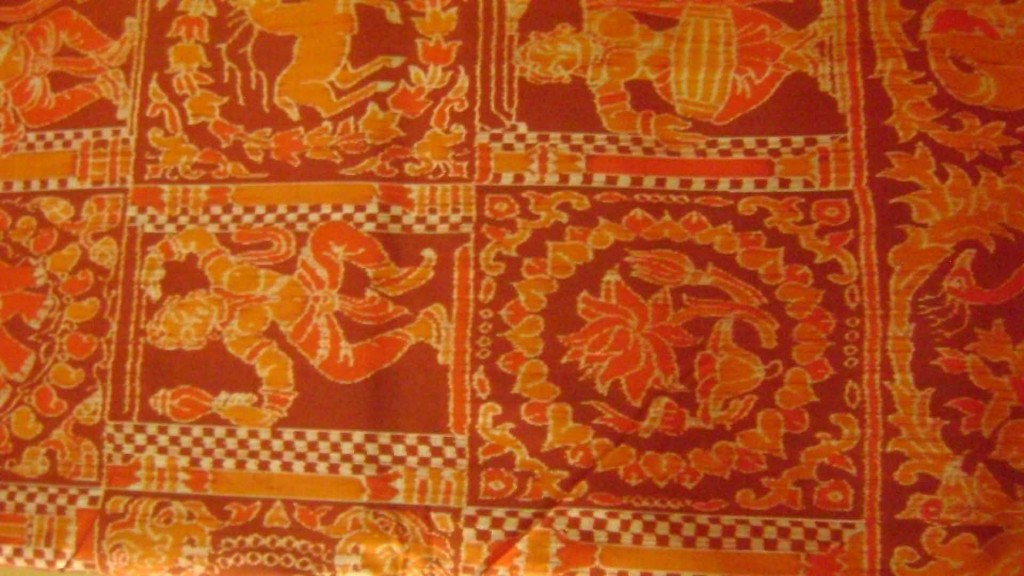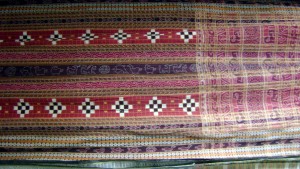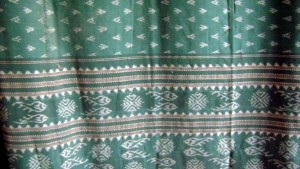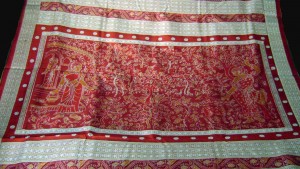by Saket Sreebhushan Sahu
Handloom weaving tradition in western Odisha is prevailing since many a generations. The handloom clothes of western Odisha have carved a niche for itself in the international market, especially sari. Saptapar, Bomkei, Habaspuri are some household names of sari design. Apart from sari, bed sheet, table cloth, screen, dress material, cloth for shirt, wall hanging, dupatta, stole etc. All these clothes are woven by a special technique named. “Baandha”/tie & die. In this technique first the thread is coloured with the tie and die technique. The coloured thread is then used to weave clothes and designs of choices forth-out from it. The designs of baandha art are inspired from temple art. The weavers are found at Sargipali of Sonepur, Barpali, Bijepur, Tarbha, Patnagarh, and Bargarh.
People like to use clothes of natural threads. Handloom clothes are preferred for luxury as well as comfort use. This Baandha/Tie &Die is a traditional art like a painting. The weaver conceptualizes extraordinary things and draws natural scenery, trees & shrub, flower & leaves, fish, river, ocean, deer, elephant, tiger, horse, mountain, birds, and human on the cloth. Even exact human faces or portrait can be drawn with this art of weaving. Deer on one site and lotus on another site can be drawn with this weaving technique.
Saptapar/Pasapali
Saptapar or Pasapali saree design is mainly woven at Sonepur, Barpali, and Baunsri. The importance of Pasapali is the chequered design in white, black and red colour. Generally Pasapali or Saptapar is woven with cotton or silk thread. The face of the saree is designed in golden coloured thread.In the face, cronch, chakra, flower, animal and birds etc is designed. And the boarder of the saree is designed with floral pattern.
The weaver designs flower, scenery, geometrical shapes, and other designs as per the order.
Habaspuri
Habaspuri name has been derived from the name of the village Habaspur of Kalahandi district of Odisha. The special Habaspuri design came to lime light in the 19th century. Now around dozens of weavers are engaged at Chicheiguda, Kalahandi. In recent time Master weaver Ugrasen Meher has revived the Habaspuri design. For the Habaspuri handloom weavers Chicheiguda Handloom Cooperative Society has been founded.
The Habaspuri design is famous for the traditional art of temple, fish, and flowers of Kondha tribes.
Bomkei
The name Bomkei design has been derived from Bomkei village of Chikiti Tahsil of Ganjam district. Bomkei is woven in traditional bandha (tie &die) and jaal (net) method. Generally Bomkei saree is used by Brahmin in puja time. In this Bomkei, Karla (bitter melon), Atsi flower, Kanthi flower, fish, Ruhi fish, tortoise, lotus, peacock etc shapes are designed. In Bomkei saree, Haldi (turmeric), Laakh ( ) etc natural colours are used.




